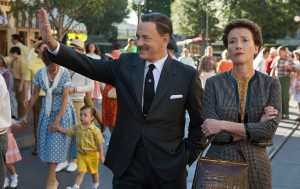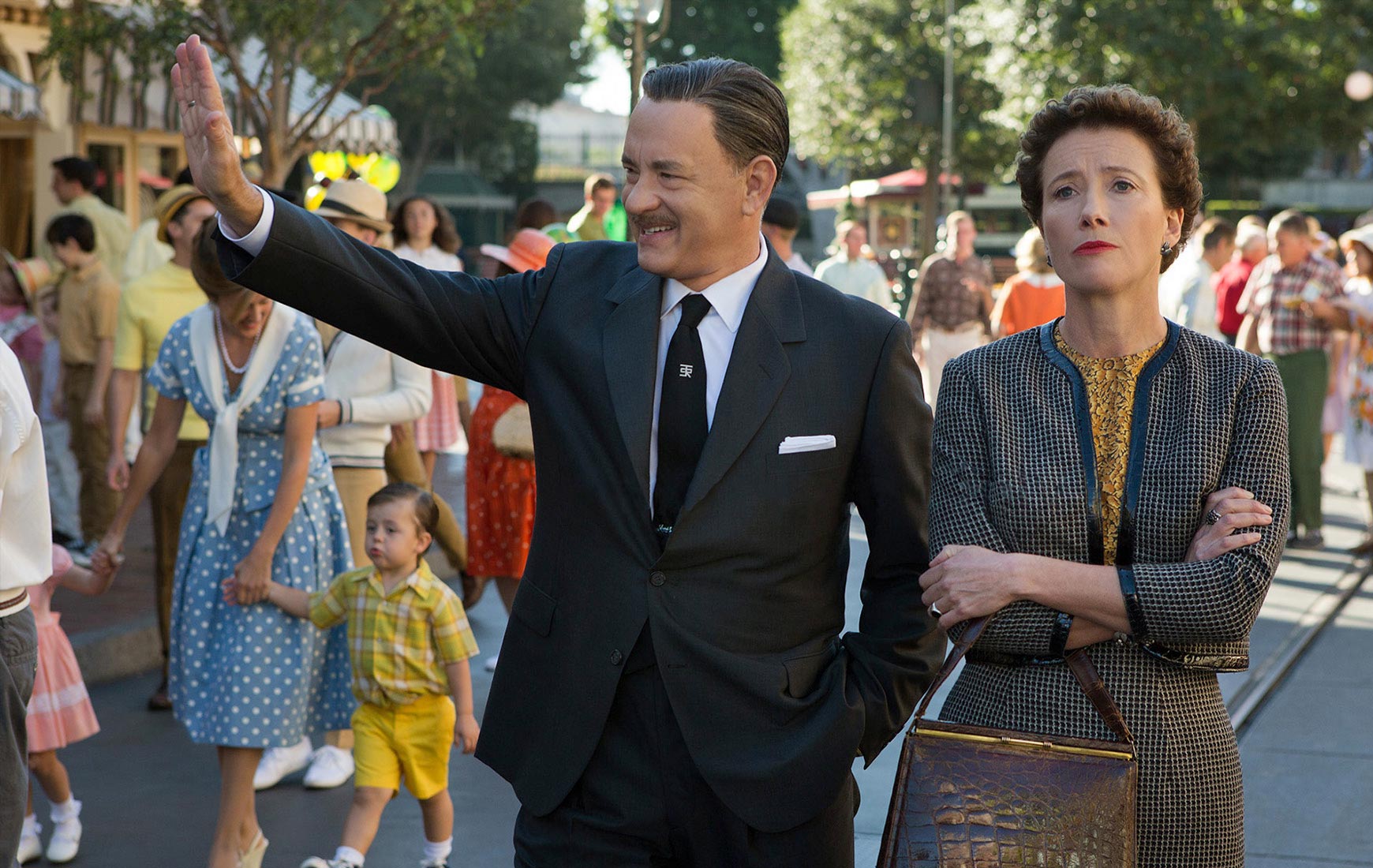Saving Mr. Banks takes us behind the scenes of one of the most iconic films in history, Mary Poppins. The film focuses on the interplay and rivalry between author P.L. Travers (Emma Thompson, witty, imperious, fantastic) and Walt Disney (Tom Hanks, exuberant, charming, sincere) who wishes to adapt her book series into a film.

As far as Travers is concerned, turning Mary Poppins into a “silly cartoon” is an atrocious idea, one she equates to “selling out.” It’s a vile concept she would never consider – until that is, the royalties from her book sales dry up and she faces financial uncertainty.
A dejected Travers finds herself on a flight from dreary London to sunny Burbank, CA. “Sunny” in this case, is an understatement. Just as Mary Poppins enters the cartoon world of penguins and merry-go-round horses that come to life, so does Travers leave a somber reality to plunge into the glitzy fantasy land of Disney Studios – and she couldn’t be more adverse.
Since Travers has not signed the contract yet, Disney and his employees are at her mercy.
The set design is fantastic, transporting us to Burbank in the ‘60s, and is aided by the fact that the Disney Studios and Disneyland itself have not changed too much in the last 50 years. All the characters look like they were taken off the set of Mad Men, so there is much eye candy for fans of tailored suits and elaborate hairstyles.
It’s not long before the team that “Uncle Walt” has tasked with adapting the book, screenwriter Don DaGradi (Bradley Whitford) and the musical Schwartzman brothers (B.J. Novak and Jason Schwartzman) realize that Travers is not there to cooperate or make their lives easy.
Her demands become increasingly ridiculous (no songs, no cartoons, no Dick Van Dyke, no colour red) and when the chipper Disney denizens see that Travers is entirely immune to their upbeat charms, a tug of war ensues between a writer desperately clinging to an idealization of the past, and entertainers looking to bring her characters to the audiences of the future.
This conflict is the most enjoyable part of the film due to the sly dialogue delivered by Thompson, who steals every scene she’s in, even the ones opposite Hanks.
Hanks’ performance of Walt Disney focuses on the magic and splendor of a visit to a Disney theme park with only a glimpse at the chains and cogs that make the rides function. You can’t build a multibillion-dollar company on smiles and fairy dust alone, and it would have been apt to see a bit more of the practical side of Disney – the visionary businessman and shrewd empire-builder that wouldn’t take no for an answer.
So why is Travers such a difficult nut to crack? Why does she retain her jaded cynicism even in the happiest place on Earth?
Juxtaposed with the 1961 story is the tale of eight-year-old Helen Goff (Travers as a child) in turn-of-the-century Australia. The girl with the golden locks is forced to grow up all too quickly when her quirky, fun-loving father (Colin Farrell, a strange casting choice but he makes it work) brings his family to ruins by succumbing to alcoholism.
While bedridden, little Helen tries to brighten his day by reading him the first poem she has ever written, a poem that has won first place in her school.
“It’s not exactly Yates, is it?” spits her father to her heartbroken face. These flashback scenes provide answers to some character-building questions.
Unfortunately, little Helen does not get the Disney ending she hopes for, and by the midpoint of the film we understand the experiences that shaped Travers into a lonely dispassionate old lady but also – because all great writing must come from pain – into a brilliant writer capable of capturing the imaginations of children and adults all over the world.
The movie does take many liberties with the truth. In real life, Travers was not at all happy with the film, and she refused to allow Disney any rights to the rest of her books. After the premiere, Travers demanded that the animated segments be removed and Disney denied her request telling her that “the ship has sailed.”
But a spoonful of sugar makes the medicine go down and Saving Mr. Banks is an emotional roller coaster that will make you cry, make you laugh and – fitting to a movie about the Disney Corporation by the Disney Corporation – make you leave the theaters with a little more joy in your life than when you went in.
Saving Mr. Banks will be opening in Montreal theatres on Dec. 20.




